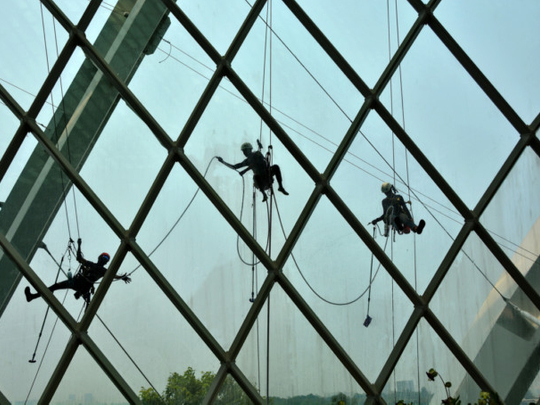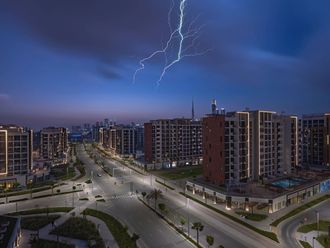
A room filled with chairs, a whiteboard, a coffee machine, a projector and piled annual reports patiently await the arrival of owners. The stage is set for the annual general meeting (AGM) of the owners’ association (OA), held for a tower in Dubai. The OA manager anticipates a good turnout this year, although his expectations dissipate as only two owners hastily shuffle through the doors a minute before starting time. Without 15 per cent of the total entitlements present at the AGM, an OA cannot achieve a quorum. If the AGM is adjourned, the second meeting scheduled will proceed, irrespective of attendance.
Decisions to be made at the AGM include the selection of the OA’s board of directors, the annual budget, and general motions. When only two attendees contribute to this decision-making process, the burden of liability and responsibility by default becomes the role of those perhaps not best suited or qualified.
Members of OAs are expected to volunteer their time and experience towards the preservation of the asset. But sometimes many desultory owners and members of the board of directors aren’t engaged with their building or are involved with the community. They also lack the education required to enhance and create asset value, and they do not understand the inexorable importance of service charge collection.
What is an owners’ association?
An OA controls, manages and administers the common areas on behalf of all the owners, dealing with issues such as maintenance, security, rule enforcement and engagement with statutory authorities. An OA manager tends to be a jack of all trades with active roles in facility management, property management, financial management and general communication. A significant financial obligation is required to maintain and improve ageing buildings. Owners need to invest in a reserve (sinking) fund to ensure their building has sufficient financial resources and, most importantly, share the obligation between all owners across the life cycle of the building and its assets.
Showing promising thought leadership, the Real Estate Regulatory Agency (Rera) has implemented reserve fund studies, auditing the assets’ current and future capital requirements, subsequently assigning the appropriate provision to the budget.
The material and legal challenges
Technical challenges intensify as buildings depreciate, with major issues faced towards the end of plant and machinery life cycle. The building management system (BMS), an intelligent machine controlling HVAC, lighting, plumbing, power, fire safety and security systems, is crucial for efficient building operation, including utility costs. If preventative maintenance and reserves toward the replacement of building systems are not sufficiently planned, the repair or replacement costs can negate potential gains from conservative energy consumption.
Collection of service charges presents ongoing challenges for OAs, especially when investors reside outside the UAE and are not apprised of their obligations to the association. The local authorities are yet to indisputably enforce legislation on owners’ service charge obligations. Unfortunately, there is a distinct lack of legislative support to fortify the authority of OAs as a legal entity and their ability to recover debts and resolve disputes within the community.
Consequences on the property
Failure to pay service charges on time, if at all, results in a deficiency to fund building operations and consequently, the inability to pay service providers to provide quality services. As a result, service quality decreases, owners’ dissatisfaction grows and the reluctance to pay increases. It is a cycle.
In the past, association managers resorted to deactivating the access cards of owners whose service charges were in arrears. Now, OAs are instructed to place a lien on the property through a Notary Public, which prevents the sale of the property. With limited recourse and no legal entity to make a claim on behalf of the association, the courts rule in favour of the delinquent owners — a troubling and yet very real occurrence.
Legislative framework is not the only cause of the problem. Some private developers have been criticised for setting service charges artificially low to entice customers, where in reality, insufficient contributions create a budget deficit, damaging the financial health of the building. The effect is cumulative, long lasting and difficult to repair.
From the emblematic cultural diversity of the UAE derives an equivalent diversity of expectations and understanding of service provider performance. The acid test is allowing the market to mature, so measurable benchmarks and industry standards for service providers can be established.
Moving forward
It is important that board members, owners, association managers and tenants are educated to address industry challenges, with clear and consistent communication from key industry stakeholders. There are now a number of training courses available to OA managers and board members. Broadening this knowledge base across real estate industry disciplines will help everyone entering this market segment understand their rights, obligations and mitigate potential disputes.
With Dubai on the world stage as the Middle East’s regional hub, OAs will play a significant role in delivering quality services to inbound foreign investors and the buildings they occupy. Coupled with Dubai’s reliance on a mature real estate market and the freehold, jointly owned property concept, associations need upskilling. We are confident in Dubai’s ability to adapt and grow and meet the demands of a progressive city.












